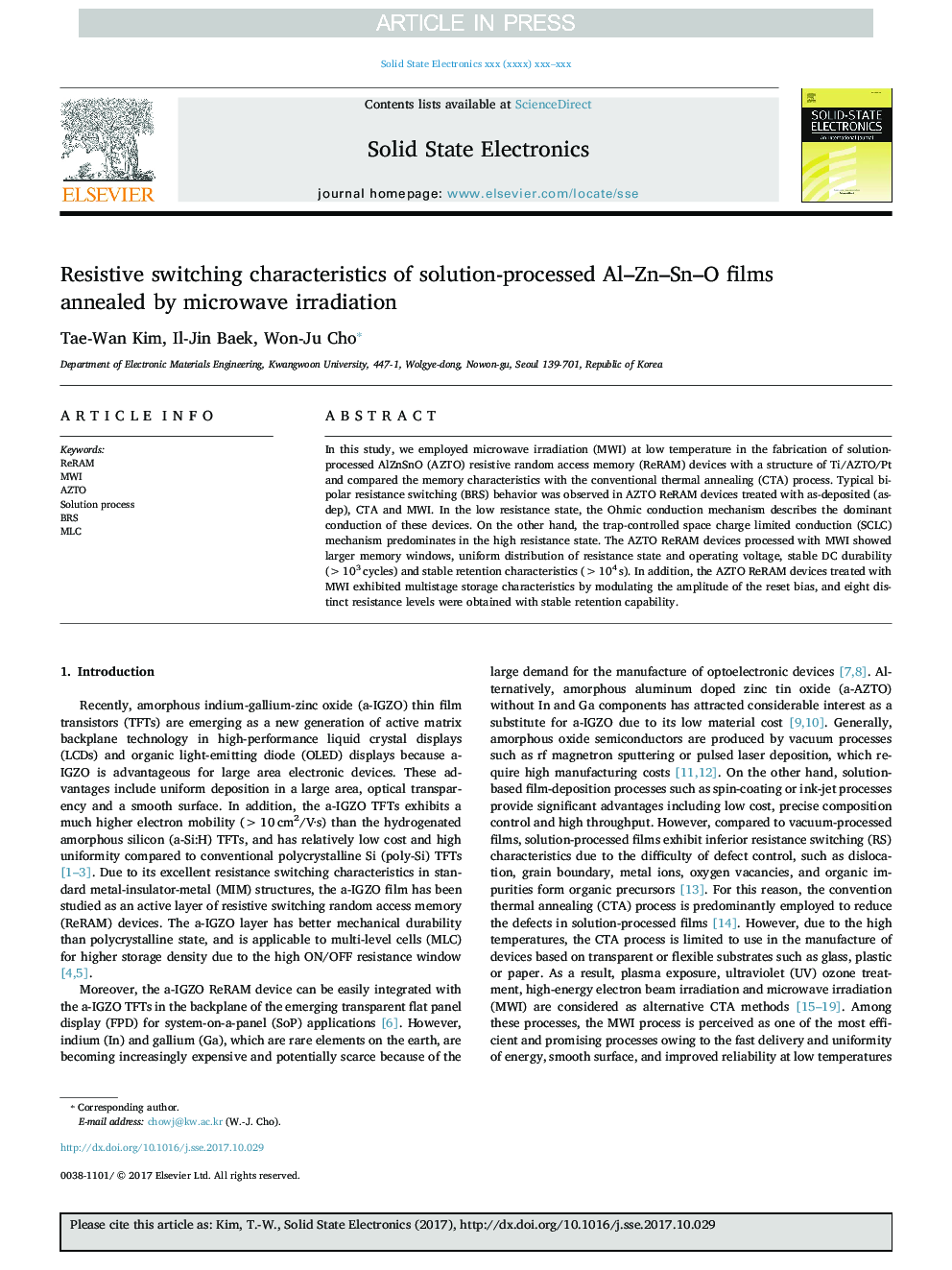| Article ID | Journal | Published Year | Pages | File Type |
|---|---|---|---|---|
| 7150592 | Solid-State Electronics | 2018 | 7 Pages |
Abstract
In this study, we employed microwave irradiation (MWI) at low temperature in the fabrication of solution-processed AlZnSnO (AZTO) resistive random access memory (ReRAM) devices with a structure of Ti/AZTO/Pt and compared the memory characteristics with the conventional thermal annealing (CTA) process. Typical bipolar resistance switching (BRS) behavior was observed in AZTO ReRAM devices treated with as-deposited (as-dep), CTA and MWI. In the low resistance state, the Ohmic conduction mechanism describes the dominant conduction of these devices. On the other hand, the trap-controlled space charge limited conduction (SCLC) mechanism predominates in the high resistance state. The AZTO ReRAM devices processed with MWI showed larger memory windows, uniform distribution of resistance state and operating voltage, stable DC durability (>103â¯cycles) and stable retention characteristics (>104â¯s). In addition, the AZTO ReRAM devices treated with MWI exhibited multistage storage characteristics by modulating the amplitude of the reset bias, and eight distinct resistance levels were obtained with stable retention capability.
Keywords
Related Topics
Physical Sciences and Engineering
Engineering
Electrical and Electronic Engineering
Authors
Tae-Wan Kim, Il-Jin Baek, Won-Ju Cho,
